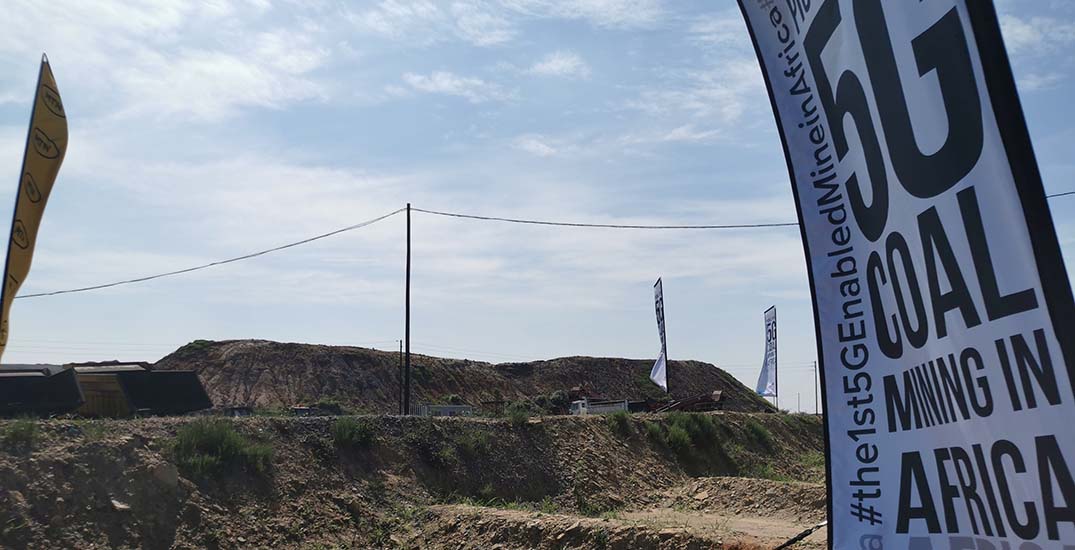Kathy Gibson reports – Improvements in safety was the main driver for implementing 5G communications in the Phalanndwa Colliery – but this is just the first step in the mine’s digitalisation journey.
Kgotso Mongalo, GM of Phalanndwa Colliery, says the deployment of 5G has assisted in communication throughout the mine, especially in the pit, and has helped the colliery to reduce accidents to about 50% of previous levels.
He says plant communication has also been enabled, with communication from and between machines helping to avoid accidents and protecting both people and machines.
Wanda Matandela, chief commercial officer of MTN, points out that the 5G deployment at Phalanndwa is the first of its kind in Africa.
“Often the conception about Africa is that we are the last to adopt technology,” he says. “But here we are in Mpumalanga, making history. We are at the forefront of changing our country because of the role mining plays in the country.”
Matandela adds that MTN positions itself as an ecosystem partner, working with strategic partners to create solutions.
“As we move from being a telco into a techco, we realise the power of partnering, and the importance of finding partners that share the same vision of servicing our customers,” he says.
“We want to be a strategic partner to our customers, which means we need to understand where they are going. For Phalanndwa, insourcing their mining operations meant they had to focus on safety, and this was the primary driver for 5G adoption.
“However, this is just the first phase of the mine’s 5G project.”
MTN has invested heavily in its 5G network: it already has 500 5G base stations and by the end of the first quarter of 2023 intends to cover 40% of the South Africa population.
“It is our role to bridge the divide between the First World and the Third World.”
Minetec provides the technology that helps mines like Phalanndwa to move towards Mining 4.0.
Chief operating office Davut Isik explains that 5G helps to guarantee the connectivity that makes the technology effective.
“Today, the need for digitalisation in mining is more compelling than ever as they are under pressure to improve efficiency, productivity and safety,” he says.
Mintec started its journey in 2019 when the Department of Mineral Resources mandated the use of collision prevention technologies in mines. Providing these solutions quickly led to additional products including fuel automation, asset management and engine protection.
“The biggest challenge in Phalanndwa was connectivity. To get the best out of the Minetec products we need realtime monitoring, which is enabled through the partnership with Huawei and MTN.”
The top priority for any mine is safety, with human error often at the root of accidents. “With these solutions, we are improving safety by protecting humans and mechanical assets,” Isik says.
Marius Engelbrecht, senior strategy consultant at Huawei, points out that 5G will impact every aspect of the world we live in, and it will touch every aspect of our lives.
“For mines, it will make an enormous difference in their operations and safety.”
Huawei has deployed multiple mining 5G networks globally, with solutions ranging from basic network capabilities to machine sensing and surveillance, to remote mining, sorting and multi-drone usage.
“This all becomes available once we have the networks in place,” Engelbrecht says.
The biggest challenge is often getting the network into the remote places where mines are typically located, and the harsh working environment, he adds. Huawei is able to provide a complete solution for this conditions, which then enables all the other use cases.

